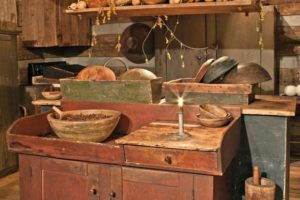
Natural stone is a common material to use in bathrooms so it makes sense that homeowners would want to continue this theme in their showers. Natural stone showers can make any bathroom feel like a spa. With one of a kind markings, dramatic colors, and rich finishes it’s no wonder this is a popular trend. However, installing stone in the shower isn’t quite as simple as other materials. Don’t worry, we’re here to help. By choosing the right materials and committing to a simple maintenance routine you can have the natural stone shower of your dreams.
Choose the right material
The most common materials for natural stone showers are marble, slate, and granite. We’ve also seen some people use more porous stones like limestone and travertine. Each one offers a different look and feel as well as a different level of maintenance. Let’s explore some of the differences between these popular types of stone.
Marble
With its light coloring and natural veining, marble is a classic choice for bathrooms. It adds an air of elegance to the space. If you love this look and want to use it in your shower as well, opt for the highest grade you can get. The veining will be more subtle than lower grades, but that’s a good thing. The composition of the veins is the most vulnerable to moisture damage. Keep in mind that even high-grade marble can become discolored over time because it contains a lot of iron. That iron rust over time when exposed to water. To prevent this, we make sure that the stone is properly sealed. You will have to regularly clean and seal the stone to keep it in tip-top shape.
Granite
This durable, dense material is a favorite for a reason. It comes in many different colors and patterns, meaning you can choose something that fits your bathroom perfectly. It’s easier to maintain than marble because it doesn’t react to acid, ammonia, or alcohol. It still needs to be sealed on all sides to ensure long-term performance in wet areas. Granite can also be quite slippery when wet, so be sure to choose a textured finish if you’re using it on the floor of your shower.
Slate
This is a more cost-effective option that still comes in a range of color tones. Which is why it’s one of the most widely used forms of stone in showers. It still needs to be properly sealed and cleaned, but overall it’s a very durable solution. Just be sure to choose the right type of slate, as some can flake over time when exposed to water. Slate is usually installed as tiles, meaning there will be grout to clean. By keeping the grout joints small it will collect less gunk over time.
Travertine and Limestone
These earthy stones can add a beautiful dimension to a bathroom. However, they’re the most porous of the stones we’re talking about today. If you’re interested in this aesthetic, be sure to ask for a stone with the lowest water absorption rate available and seal it well. There most likely will still be some discoloration over time, though some homeowners find this patina effect charming. You just don’t want it to shift from charming to damaging, so be sure to care for it properly.
Maintaining Natural Stone Showers
We’ve talked an awful lot about sealing and cleaning your stone showers, but what exactly does that entail? Don’t let it scare you off. Any material exposed to moisture on a regular basis is going to need regular maintenance, not just natural stone.
Keep your routine simple but consistent. Keep a squeegee in the shower and remove excess water from the stone after each shower. This will help maintain the shower’s seal and keep the stone looking fresh. Once a week wipe it all down with a non-acidic, neutral cleaner with a pH around seven. Avoid harsh cleaners and vinegar that could damage the surface and soapy cleaners that build up and attract dirt. When it’s time to clean the grout find a stone-safe grout cleaner that’s non-abrasive and gently scrub the grime with a soft nylon brush.
Plan to seal your stone at least once a year. Depending on the type of stone and the type of sealer you use it may need to be done a bit more often. Be sure to ask us about the individual needs of whichever stone you choose.
Marble can lose its luster over time due to regular water exposure and build-up of calcium deposits. This can be fixed by having it re-honed or re-polished every three to five years.
Do you want to enjoy the natural beauty of stone in your shower? Call us to learn more about your options.





